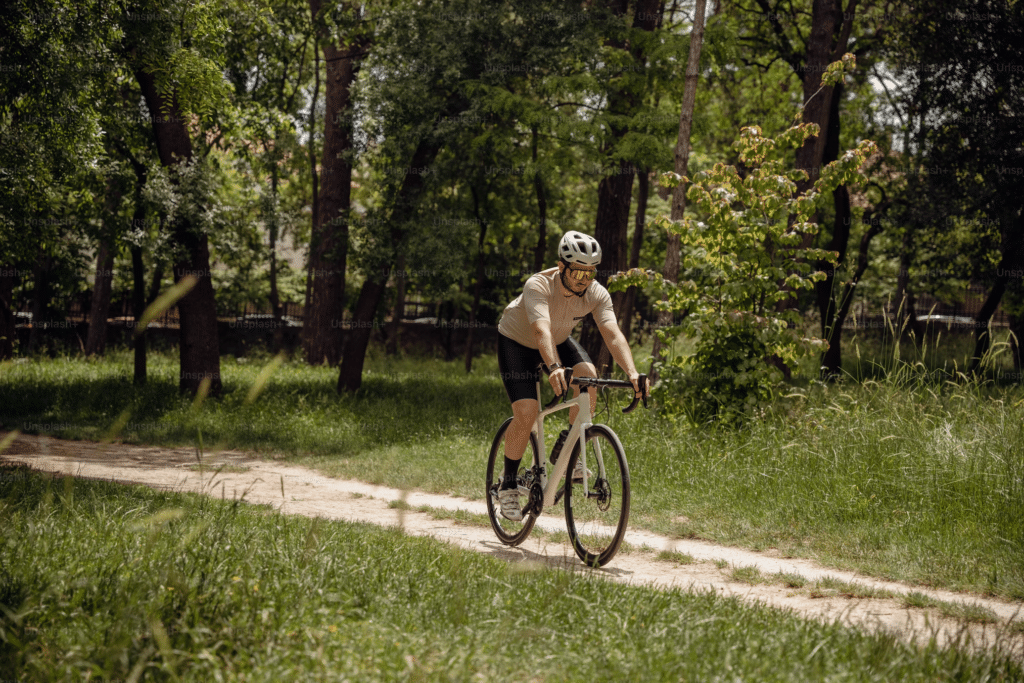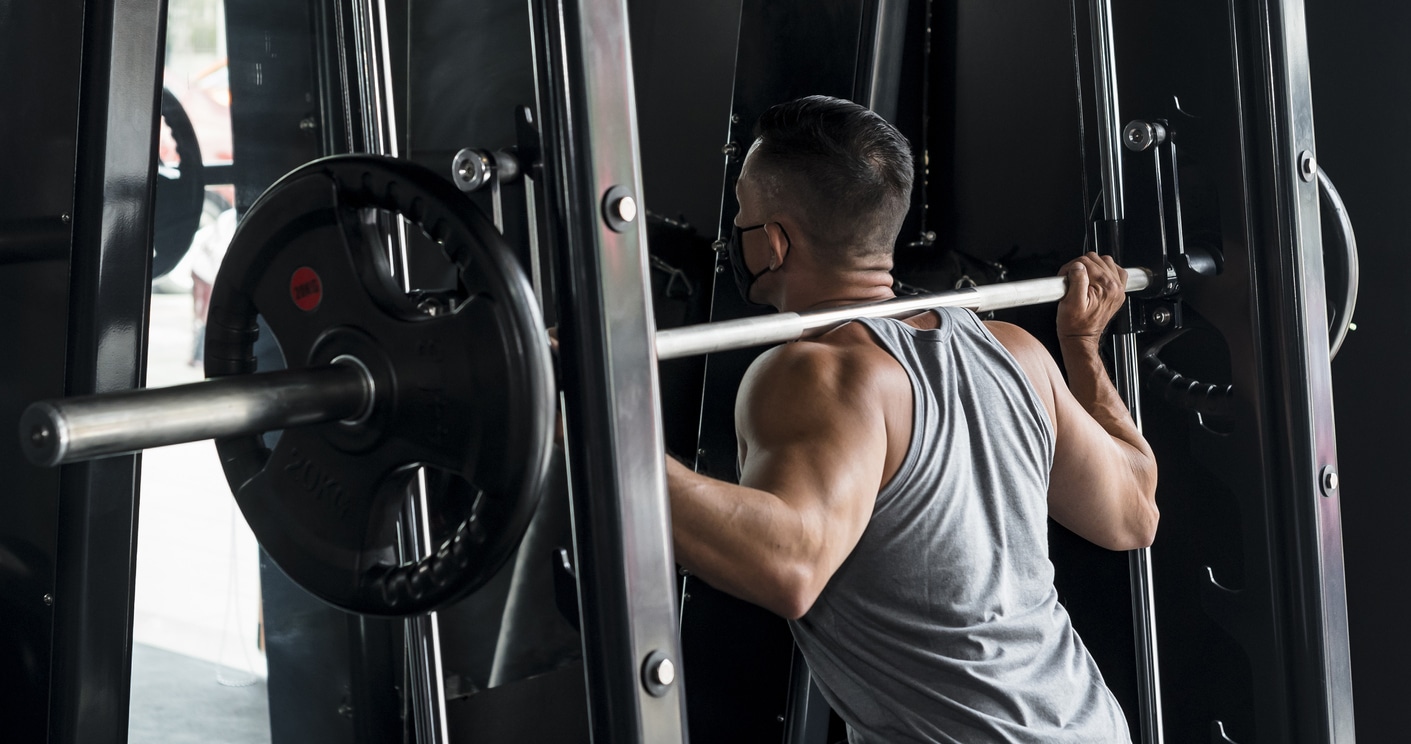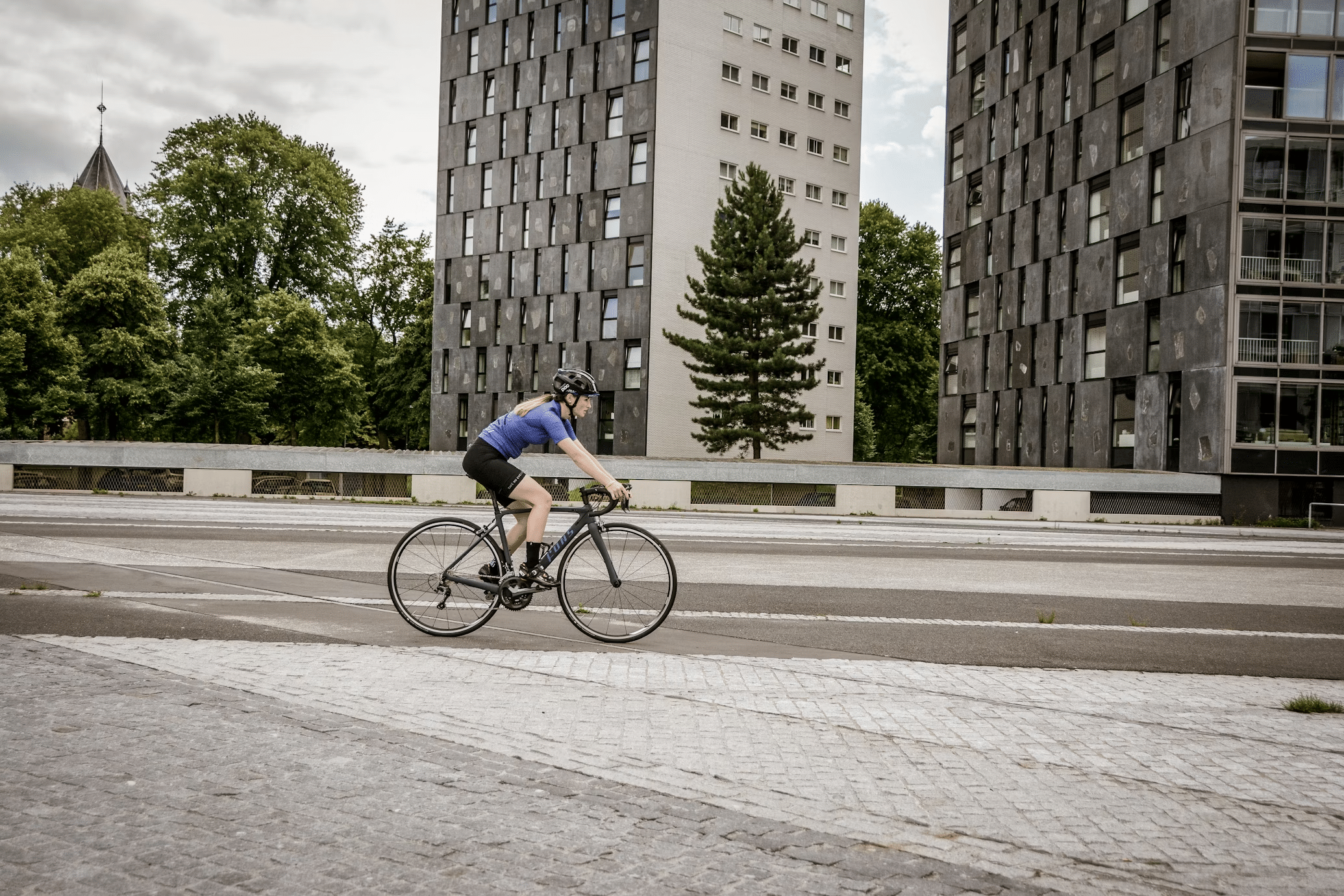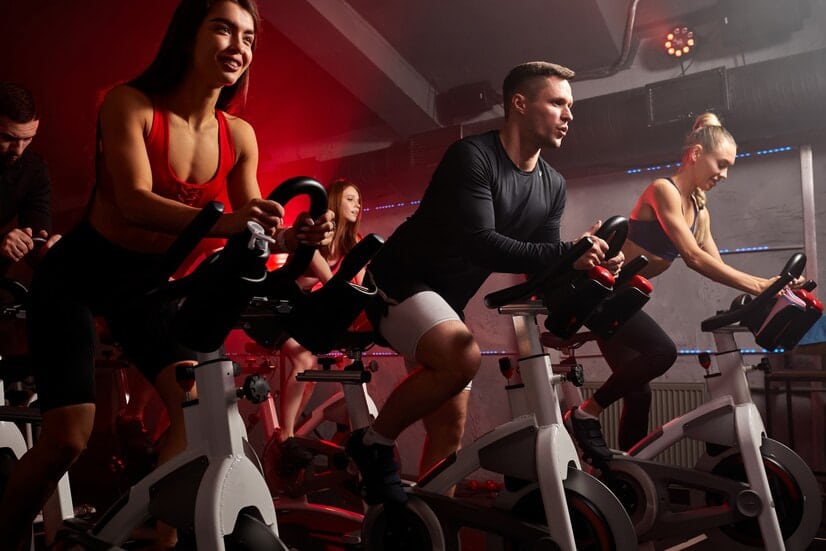
Summary
Welcome » Welcome » Tips for getting started » Cycling bodybuilding program: our advice for progress
Cycling bodybuilding program: our advice for progress
Strength training is essential to improve your cycling performance. It boosts your power, prevents injuries and corrects muscular imbalances. Find out how to incorporate an effective strength training program into your cycling routine.
We offer you a complete guide for beginners and experts. Learn how to structure your strength training sessions, balance your training and maximize your results. Adapt your program according to the seasons and your objectives.
Are you looking to become a stronger, more resilient cyclist? This article is made for you. Read on to transform your training and reach your goals.
Summary
Why strength training is essential for cyclists
Improved performance (power, endurance)
Strength training is crucial for cyclists because it boosts your performance. By strengthening your muscles, you increase your power and endurance. More power means you can pedal harder, climb easier and sprint faster. Endurance, for its part, allows you to maintain sustained effort over long distances without tiring prematurely. Regular strength training sessions can transform your abilities on the bike, making you a more complete and resilient cyclist.

Injury prevention
A bodybuilding program Well-designed also helps prevent injuries. Cycling uses certain muscle groups intensively, which can lead to imbalances and tension. By strengthening your entire body, you reduce the risk of common injuries like tendonitis, lower back pain or knee problems. Balanced and strong muscles provide better support for your joints and improve your posture, two key elements for riding safely and pain-free.
Correction of muscle imbalances
Cycling is an asymmetrical sport that can create muscular imbalances. The leg muscles, for example, are often more developed than those of the upper body. Bodybuilding helps correct these imbalances by specifically working the muscles less used by cycling. By targeting muscle groups such as the abdominals, lower back or shoulders, you promote a more balanced distribution of force and better muscular coordination. This way, you optimize your overall efficiency and avoid harmful compensation in the long term.
Common ideas about bodybuilding and cycling
“Bodybuilding will slow me down”
Many cyclists worry that strength training will slow them down by adding weight and decreasing flexibility. It's a myth! In reality, a well-structured strength training program improves your strength without necessarily increasing your muscle mass significantly. The key is to focus on functional exercises and higher repetitions with moderate loads. This allows you to develop endurance and powerful muscles, without swelling them excessively. So, instead of slowing you down, strength training will make you more explosive and more efficient on the bike.
“I don’t need weight training, cycling is enough”
This preconceived idea is common but misleading. Although cycling is excellent for the cardiovascular system and leg muscles, it does not exercise all muscle groups in a balanced manner. Ignoring strength training can lead to muscle imbalances and increase the risk of injury. Additionally, strength training helps strengthen stabilizing muscles and improve bone density, aspects that cycling alone cannot cover. Incorporating strength training sessions into your routine helps supplement your training and prepares you to tackle various terrains and conditions with optimal physical condition.
The basics of a strength training program for cyclists
Training frequency and periodization
The key to an effective strength training program for cyclists is frequency and periodization. It is recommended to train in strength training two to three times a week, alternating with cycling sessions. Periodization involves dividing the year into cycles: preparation, competition, and recovery. Each cycle has specific objectives and adapts the intensity and volume of the exercises. This approach optimizes strength gains, while avoiding overtraining and respecting the specific needs of each phase.
Recommendations depending on the time of year (preparation, competition, recovery)
During the preparation phase, focus on building core strength with compound exercises like squats and deadlifts. During competition periods, slightly reduce the frequency and intensity of weight training sessions to preserve the energy needed for races. Prioritize posture exercises and functional movements. In the recovery phase, opt for lighter sessions, focused on mobility and flexibility, to allow your body to regenerate while maintaining muscle tone.
Example of weekly schedule combining cycling and weight training
A weekly schedule could look like this:
- Monday : Strength training (legs and core)
- Tuesday : Long bike ride (endurance)
- Wednesday : Strength training (upper body)
- Thursday : Cycling training (interval training)
- Friday : Rest or mobility session
- Saturday : Strength training (legs and core)
- Sunday : Bike ride (moderate pace)
This schedule makes it possible to effectively combine the two disciplines, ensuring adequate recovery between weight training and cycling sessions. The objective is to harmonize the two types of training to maximize the benefits of each, without creating excessive fatigue.
Muscle groups to target as a priority
Lower limbs (quadriceps, hamstrings, calves)
For cyclists, the lower limbs are obviously essential. The quadriceps, located at the front of the thighs, are used with each pedal stroke. Strengthening these muscles improves pedaling power and endurance. The hamstrings, at the back of the thighs, work in addition to the quadriceps to stabilize and balance movements. Finally, the calves play a crucial role in transmitting force to the bike and in overall stability. Exercises like squats, lunges, and calf raises are great for building these key muscles.
Core (abdominals, lumbar)
The core is the body's center of gravity and provides the stability necessary for efficient pedaling. The abdominals and lower back must be particularly strengthened to maintain good posture on the bike and prevent back pain. A strong core also allows power to be better transferred from the legs to the bike. Incorporate exercises like planks, crunches, and core rotations for a strong, balanced core. These exercises also help improve balance and coordination, which are essential for cyclists.
Upper body (back, shoulders)
Although less stressed than the legs, the back and shoulders play an important role in maintaining posture and handling the bike. A strong back helps prevent pain and injuries, especially during long rides. The shoulders, for their part, are essential for controlling the bike, especially on technical terrain. Exercises like pull-ups, rows and shoulder presses strengthen these muscle groups. By working on these areas, you ensure better stability and comfort during your bike rides.
The importance of warming up and cooling down
Specific warm-up routine before weight training
A good warm-up is crucial before each strength training session. It prepares your muscles, joints and cardiovascular system for exercise, thus reducing the risk of injury. An effective warm-up routine should include dynamic exercises that gradually increase body temperature and blood circulation. For example, exercises like empty squats, walking lunges, and trunk rotations are ideal for activating key muscles. Spend 10 to 15 minutes on this warm-up to ensure a safer and more productive strength training session.
Post-workout recovery techniques
Recovery is just as important as the workout itself. After a weight training session, your muscles need time and care to repair and strengthen. Recovery techniques include stretching, massage, and using foam rollers to release muscle tension and improve blood circulation. Additionally, a diet rich in protein helps with muscle repair, and adequate hydration is essential to avoid cramps and soreness. Also allow sufficient rest periods between sessions to avoid overtraining.
Taking the time to properly warm up and cool down not only prevents injuries but also improves your overall performance. By integrating these practices into your training routine, you optimize your physical capabilities and maximize the benefits of each session. Don't neglect these crucial steps to becoming a stronger, tougher, more resilient cyclist.
Key exercises for a cycling strength training program
Leg exercises
Squats and variations
Squats are essential for cyclists. They strengthen the quadriceps, hamstrings and glutes, essential for pedaling power. Vary the squats by adding dumbbells or trying single leg squats (pistol squats) to work on balance and stability.
Lunges and variations
Lunges build leg strength and endurance, targeting the same muscle groups as squats, but with different dynamics. Try forward, backward, and side lunges to challenge your muscles from different angles. Walking lunges add a balance and coordination component.
Leg core exercises
Leg conditioning is crucial for bike stability and control. Exercises like glute bridges and leg raises improve the strength of the stabilizer muscles. Integrate these movements to prevent imbalances and increase muscular resistance.
Core exercises
Boards and variations
Planks are perfect for strengthening the core. They work the abdominals, obliques and lower back, improving stability and posture on the bike. Vary the planks with side planks and leg lift planks for a complete core workout.
Rotations and anti-rotations
Rotation and anti-rotation exercises, such as Russian twists and paloff presses, strengthen the oblique and transverse abdominis muscles. They improve the ability to resist twisting forces, essential for maintaining a stable position on the bike.
Upper body exercises
Pull-ups and rows
Pull-ups and rows are essential for building back and shoulder strength. Pull-ups strengthen the lats and biceps, while the row targets the rhomboids and trapezius. These exercises improve posture and pulling power, useful when going uphill.
Push-ups and variations
Push-ups strengthen the pectorals, triceps and shoulders. Vary with classic, incline and decline push-ups to work different upper body muscles. These exercises improve shoulder stability and core strength, essential for bike control.
These key exercises form the basis of an effective strength training program for cyclists. By integrating them into your routine, you will strengthen the main muscle groups used by cycling, improve your performance and reduce the risk of injury.
12-week progressive strength training program
Phase 1: Adaptation (Weeks 1-4)
Phase Objectives
The main goal of this phase is to get your body used to weight training. It's about building a strong foundation by focusing on technique and preparing muscles, tendons and ligaments for heavier loads.
Recommended exercises
Basic exercises include squats, lunges, push-ups and planks. Focus on compound movements that work multiple muscle groups at once.
Number of sets and repetitions
Start with 2 to 3 sets of 12 to 15 repetitions for each exercise. Use light to moderate weights to focus on fitness and muscular endurance.
Phase 2: Strength Development (Weeks 5-8)
Progression of charges
Gradually increase loads to stimulate strength development. The goal is to lift heavier while maintaining good technique.
New exercises introduced
Add exercises like deadlifts, pull-ups, and bench presses. These movements help target additional muscle groups and increase overall strength.
Adjusting training volume
Work your way up to 3 to 4 sets of 8 to 10 reps for each exercise. Increase rest periods between sets to allow for adequate recovery.
Phase 3: Power and muscular endurance (Weeks 9-12)
Integration of explosive exercises
Incorporate explosive exercises like box jumps, kettlebell swings and burpees. These movements develop muscular power and explosiveness, essential for sprints and accelerations in cycling.
Circuit work
Implement training circuits that combine several exercises in sequence with little rest between sets. This improves muscular endurance and cardiovascular capacity.
An example circuit might include squats, lunges, push-ups and planks, done in quick succession. Perform each exercise for 30 to 45 seconds, followed by 15 to 30 seconds of rest. Repeat the circuit 3 to 5 times.
This 12-week progressive program is designed to gradually build your strength, power and endurance. By following these phases, you will optimize your performance on the bike while minimizing the risk of injury. Be sure to listen to your body and adjust loads and repetitions based on your progress and individual needs.
Adaptation of the program according to the level and objectives
For the beginner cyclist
Basic exercises to master
For beginners, it is essential to focus on the basic movements. Squats, lunges, push-ups, and planks are foundational exercises. They allow you to develop good technique and strengthen the main muscle groups used in cycling.
Adapted training frequency
Start with two strength training sessions per week. This allows your body to gradually adapt to resistance training without causing overtraining.
Slow and safe progress
Gradually increase the weights and repetitions. For example, add 1 to 2 kg every two weeks. The goal is to progress slowly to avoid injury and build a solid foundation.
For the intermediate cyclist
Introduction of advanced techniques
Intermediate riders can start to incorporate advanced techniques like supersets and drop sets. These methods increase training intensity and promote faster strength gains.
Periodization of training
Use a more complex periodization, alternating phases of maximum strength, muscular endurance and active recovery. This helps maintain an optimal balance between training volume and recovery.
Example of weekly program
- Monday : Bodybuilding (strength, lower body)
- Tuesday : Cycling (endurance)
- Wednesday : Rest or yoga
- Thursday : Strength training (endurance, upper body)
- Friday : Cycling (intervals)
- Saturday : Bodybuilding (power, core)
- Sunday : Cycling (long outing)
For the advanced cyclist
Specific strength training according to the discipline (road, mountain bike, track)
Advanced cyclists must adapt their strength training program according to their discipline. Road riders will benefit from strength sessions to improve pedaling power, while mountain bikers and trail riders will have to integrate power and stability exercises.
Maximum power work
Incorporate maximum power exercises like heavy deadlifts, explosive squats and cleans. These movements improve explosive strength, essential for sprints and running attacks.
Each level of cyclist, from beginner to advanced, requires a specific approach to optimize results. By adapting exercises, frequency and intensity according to your level and goals, you maximize your performance and reduce the risk of injury. Continually monitoring and adjusting your program will allow you to progress effectively and sustainably.
Nutrition and recovery to support the strength training program
Nutrition adapted to cyclists who do weight training
Protein requirements
Protein is essential for muscle repair and growth. Strength-training cyclists should consume between 1.2 and 2.0 grams of protein per kilogram of body weight per day. Protein sources include lean meat, fish, eggs, dairy, legumes and plant-based proteins. A diet rich in protein helps repair damaged muscle fibers and promotes faster recovery.
Timing meals around workouts
Meal timing is crucial to maximizing training benefits. Consume a meal rich in carbohydrates and protein approximately 2 to 3 hours before your weight training session to provide the necessary energy. After training, eat a snack or meal containing protein and carbohydrates within 30 minutes to an hour of exercise. This helps replenish glycogen stores and initiate muscle repair.
Useful Supplements (and Ones to Avoid)
Certain supplements may be beneficial, such as protein powders, branched-chain amino acids (BCAAs), and creatine. They can improve recovery and performance. However, avoid supplements that are unverified or contain questionable ingredients. It is always best to consult a healthcare professional before starting any new supplement.
Effective Recovery Strategies
Massage and self-massage techniques
Massage and self-massage, with foam rollers or massage balls, help release muscle tension and improve blood circulation. This reduces soreness and speeds up recovery. Incorporate these techniques into your post-workout routine for quick and effective relief from tired muscles.
Importance of sleep
Sleep is a crucial part of recovery. During sleep, the body repairs muscle tissue and releases growth hormones. Aim for 7 to 9 hours of quality sleep each night to optimize recovery and performance. Good sleep also improves concentration and motivation, essential for effective workouts.
Stress management
Chronic stress can hinder recovery and performance. Practice stress management techniques like meditation, deep breathing, or yoga. These practices promote relaxation and help maintain optimal mental and physical balance.
By combining proper nutrition with effective recovery strategies, you will best support your strength training program. A balanced approach optimizes muscle gains, reduces the risk of injury and improves cycling performance. Be sure to tailor these tips to your individual needs and specific goals.
Integrating strength training into an overall cycling training plan
Balancing bodybuilding and cycling training
Scheduling sessions during the week
To balance strength training and cycling, plan your sessions strategically. Combine strength training sessions on days when you have less intense cycling trips or active recovery days. For example, a strength training session on Monday, a light bike ride on Tuesday, an intense ride on Wednesday, another strength training session on Thursday, and so on. This helps maximize the benefits of each type of workout without overtaxing your body.
Adjustment according to competition periods
During competition periods, reduce the frequency and intensity of strength training sessions to conserve energy for races. Focus on posture and mobility exercises to avoid excessive fatigue. During preparation, you can intensify your strength training sessions to develop the strength and power needed for the upcoming season.
Example of a monthly schedule combining cycling and bodybuilding
Week 1-2:
- Monday : Strength training (legs and core)
- Tuesday : Cycling (moderate endurance)
- Wednesday : Strength training (upper body)
- Thursday : Cycling (interval training)
- Friday : Rest or mobility
- Saturday : Cycling (long outing)
- Sunday : Rest
Week 3-4:
- Monday : Bodybuilding (strength, lower body)
- Tuesday : Cycling (endurance)
- Wednesday : Rest or yoga
- Thursday : Strength training (endurance, upper body)
- Friday : Cycling (intervals)
- Saturday : Bodybuilding (power, core)
- Sunday : Cycling (long outing)
Monitoring progress and adjustments
Measuring tools (strength, power, body composition)
Use tools like strength testing, power meters, and body composition analysis to track your progress. Regular testing allows you to evaluate the effectiveness of your strength training and cycling program, and make adjustments if necessary.
When and how to modify the program
It is crucial to adjust your program based on your progress and how you feel. If you notice stagnation or excessive fatigue, reduce the intensity or frequency of your sessions. Conversely, if you are progressing well, gradually increase the loads or complexity of the exercises. Listen to your body and adapt your training to maintain optimal balance.
Incorporating strength training into an overall cycling training plan requires careful planning and ongoing adaptation. By properly balancing weight training and cycling sessions, you can improve your performance while minimizing the risk of overtraining and injury. A well-structured and flexible approach will allow you to get the most out of your efforts, on and off the bike.

Conclusion
Strength training is essential for cyclists, improving power and endurance while preventing injuries. A well-structured program adapted to your level maximizes benefits without compromising performance on the bike. Integrating strength training and cycling requires careful planning to balance the two disciplines.
By eating a proper diet and practicing effective recovery techniques, you will optimize your workouts. Following a progressive program over 12 weeks helps improve strength, power and muscular endurance. Each level, from beginner to advanced, will find specific adaptations to progress in complete safety.
To go further, explore our articles on sports nutrition and advanced recovery techniques. Also discover our tips for improving your cycling performance using innovative training strategies. Continue learning and training to achieve your cycling goals.
Indoor cycling and muscle strengthening with SPACE CYCLE
Are you looking to combine cycling and bodybuilding? At SPACE CYCLE, our POWER RIDE workout combines cardio and strengthening to offer you a complete workout, focused on working the “core”.
At SPACE CYCLE, you embark on an immersive experience through a unique light show and a supercharged atmosphere, fueled by our coaches and their exclusive playlists.
Join us in our studios in Bonne Nouvelle or Bastille for indoor cycling classes like you've never seen them before!
Read also
RPM combien de fois par semaine : Guide pour optimiser vos séances
Vélo d’appartement bienfaits : pourquoi l’adopter dès maintenant ?
Follow us
on instagram
To follow all our news,
take advantage of our tutorials and participate
in our many contests.
Breaking news!
Receive our newsletter.





